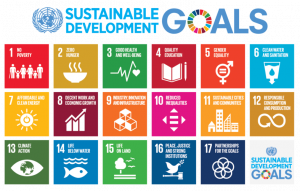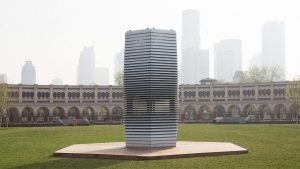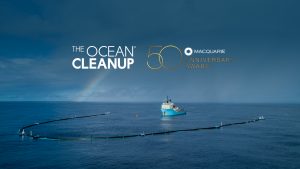Addison Smith
In 2015, the United Nations along with 193 nations welcomed the Sustainable Development Goals. Pope Francis, Nobel Peace Laureate Malala, and superstar Shakira came to the UN and pleaded for a world free from poverty, inequality, and climate change. Their emotional speeches and songs struck excitement around the world, as hope emerged from this agreement. By 2030, these goals, to name a few, seek to eliminate poverty and hunger, promote quality education for all, and eradicate the effects of climate change. However, after the agreement was signed, many argued that the goals were too idealistic or too unrealistic; others argued that these goals did not go far enough. We are now five years into the agreement– is the world on track to eradicate poverty, hunger, and climate change by 2030? Does the SDG excitement still exist? The answers to these questions are ambiguous, as the world is on track to accomplish some goals, while extremely behind in attempting to accomplish others. However, holistically, the world is not on track to accomplish the SDGs. We must take decisive action to change our course.

Michael Green, an economist and CEO of Social Progress Imperative, forecasts the world’s progress towards these goals based on economic modeling. According to his predictions, there is only one country in the world that is projected to accomplish all 17 goals—Denmark (The Future). It is worrisome to think that 193 nations signed an agreement, but only one signer is projected to accomplish the outlined goals. According to Green, based on the current track, the world will not accomplish the 17 SDG targets until 2094— that is 64 years after 2030 (The Future). What is the world doing? Did these 193 nations actually expect to accomplish these goals? If so, it clear that the world must change its trajectory.
According to the SDG tracker, the world is progressing in terms of eradicating hunger, providing accessible healthcare, and providing clean water and sanitation. In fact, the world could accomplish ninety percent of these three areas by 2030 (“SDG Tracker”). Green argues that if the world could change its trajectory, these three SDGs could be accomplished completely. However, he makes it clear that the world is not progressing towards the SDGs pertaining to inclusiveness and gender equality. In fact, he says that the world is actually declining. According to the SDG tracker, the percentage of domestic violence has increased worldwide; the discrimination against the LGBTQ+ community has increased, and number of childhood marriages has increased (“SDG Tracker). The SDGs are grounded in the idea that no one is left behind. The world cannot not choose some SDGs to target while neglecting others. If no one is going to be left behind, the world must works towards all of the SDGs.
It is evident that if the world expects to meet its projected goals, or even get close by 2030, the current trajectory must improve. It is time to realign the world’s investment in the SDGs. The large, powerful nations must first set the example. The G7 countries are considered the seven richest nations in the world, and, unfortunately, they are all failing to accomplish the outlined goals. They have the resources to eradicate poverty, inequality, and climate change in their nations, yet they are not investing the necessary time or money to hold up their end of the bargain. How can developing nations be expected to meet the SDGs, when the most economically powerful countries in the world are failing to do so?
Ultimately, the 193 nations that agreed to the SDGs must do better. We must rekindle the excitement and enthusiasm that we had in 2015. We CAN accomplish these goals. We CAN eradicate poverty, hunger, inequality, and climate change. Frankly, time is running out; we HAVE to accomplish these goals. Our world depends it—our livelihood depends on it.
Citations:
“About the SDG Tracker – SDG Tracker.” Our World in Data. N.p., n.d. Web. 01 Mar. 2020.
The Future: The Global Goals We’ve Made Progress On– and the Ones We Haven’t. Perf. Michael Green. TED. TED, Sept. 2018. Web. 01 Mar. 2020.
“Sustainable Development Goals.:. Sustainable Development Knowledge Platform.” United Nations. United Nations, n.d. Web. 01 Mar. 2020.

